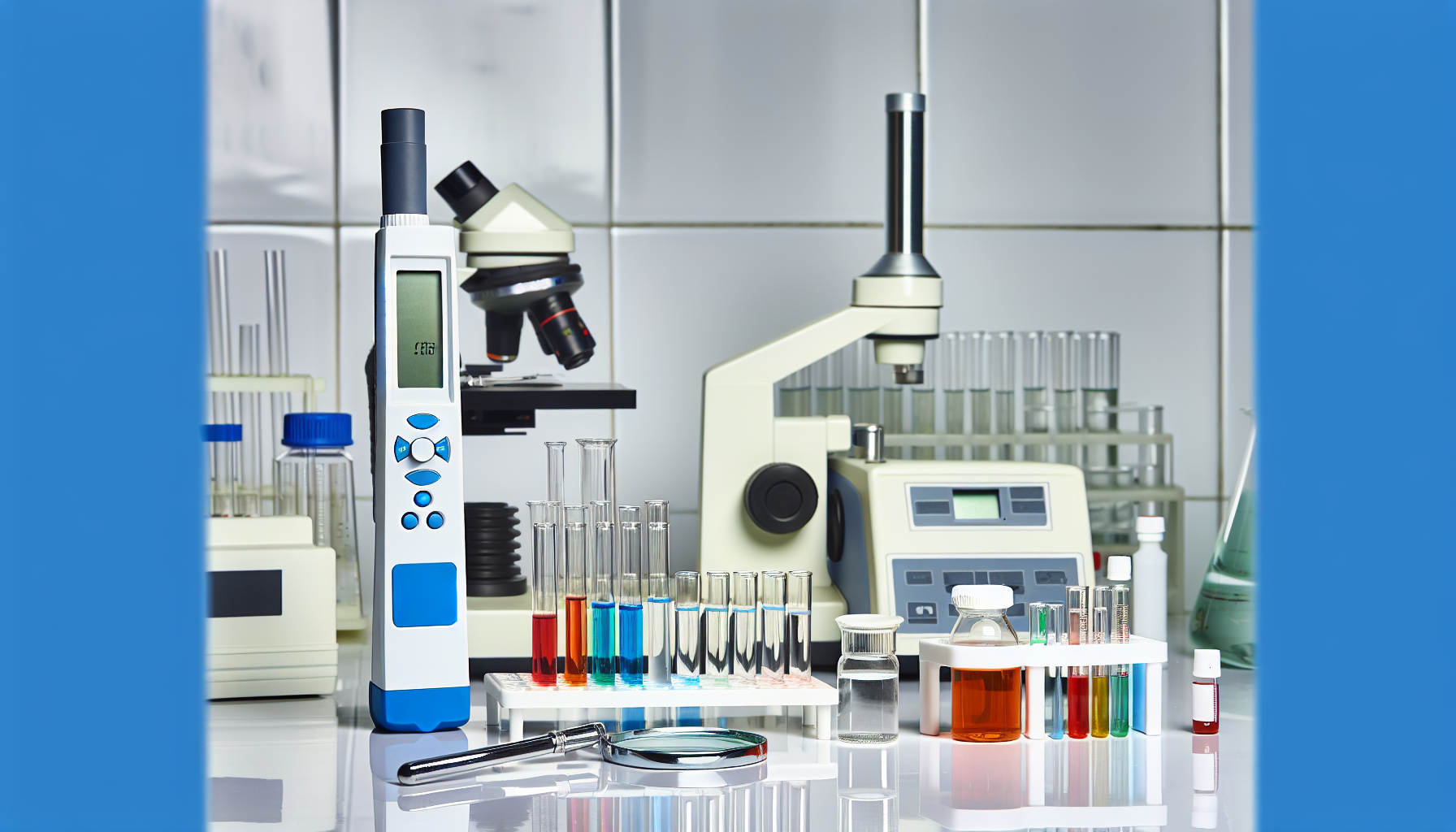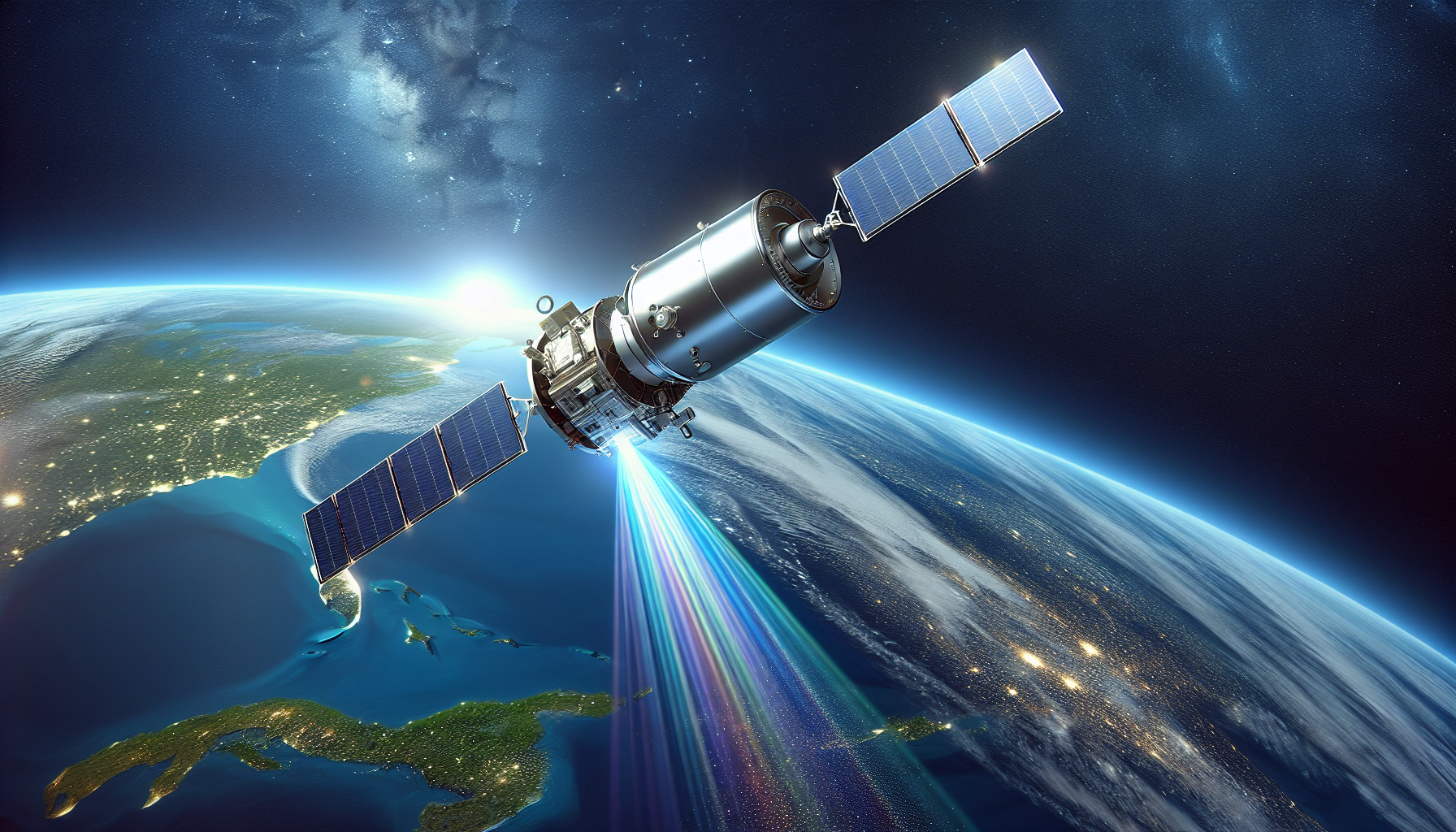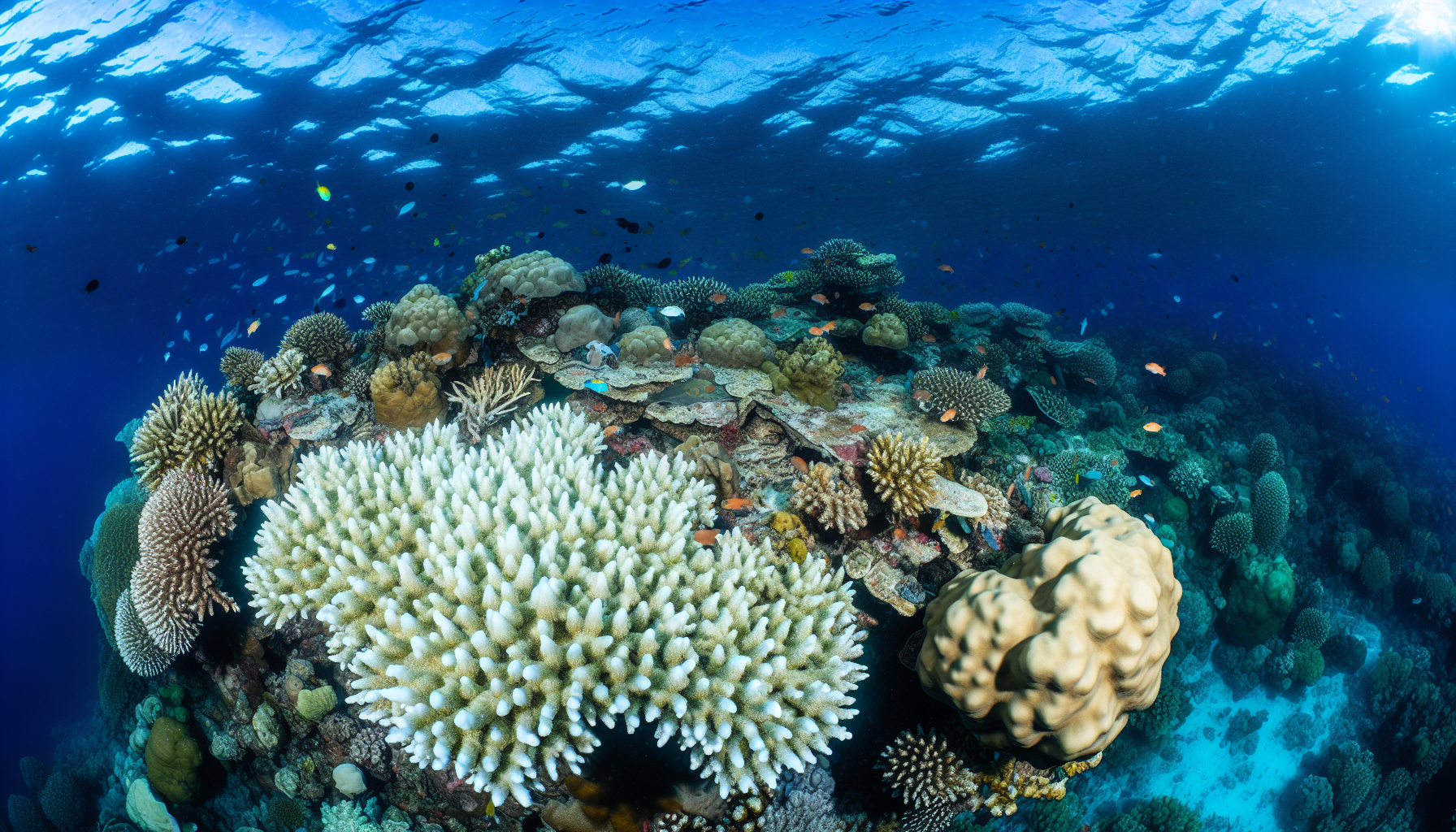Understanding Temp Water: The Role of Temperature in Aquatic Environments
The keyword ‘temp water’ is central to understanding aquatic ecosystems. It influences the metabolic rates of aquatic organisms, the oxygen levels in bodies of water, and has implications for the health of our planet. Discover the intricate interplay between water temperature and life beneath the waves, the techniques for accurate temperature measurement, and the global climate consequences in this detailed exploration.
Key Takeaways
-
Water temperature significantly influences aquatic species’ behavior, survival, and reproduction, with human-induced changes posing risks to these natural rhythms.
-
Advanced technologies, such as digital sensors on buoy networks and satellite imagery, have improved the accuracy and extent of sea surface temperature measurements, which are critical for scientific and environmental studies.
-
Global warming has led to increased sea surface temperatures and ocean heat content, exacerbating severe weather events and impacting marine biodiversity, necessitating measures like sustainable development practices and environmental policies to protect marine ecosystems.
The Importance of Water Temperature

Water temperature, extending from the surface down to the deepest trenches, significantly determines the living conditions and overall health of aquatic habitats. Often referred to as the ‘abiotic master factor,’ water temperature dictates the rhythms of life beneath the waves and along the water’s edge, shaping the behavior, survival, and population dynamics of countless species.
Temperature, by influencing nearly all other water quality parameters, holds the potential to alter the physical and chemical properties of water, thereby affecting its quality. So, how does it do this? The answer lies in the intricate dance between temperature and the life it supports, a dance that begins with the most basic building blocks of life – aquatic organisms.
Aquatic Organisms
Temperature, in the ocean’s depths and along the riverbanks, exerts a pivotal role in molding the behaviors and habitat preferences of aquatic species. Slight shifts in water temperature can cause significant changes in metabolic rates and biological activity, often doubling physiological functions when the temperature increases by just 10°C - a phenomenon explained by the Q10 rule.
Beyond mere survival, temperature modulates the subtle interplay of predator-prey interactions, respiration, digestion, and a host of other physiological processes. In essence, each species thrives within specific thermal habitats, with extreme temperature shifts posing a threat to their survival. Human activities, which often alter water temperatures, can disrupt the natural rhythms and behaviors of aquatic life, including critical processes such as migration and spawning.
Water Quality

Water temperature critically determines the solubility of oxygen in colder water. Here’s how it works:
-
Colder waters retain more dissolved oxygen than their warmer counterparts.
-
As water temperature increases, the amount of dissolved oxygen decreases.
-
This can affect the health and sustainability of aquatic ecosystems.
This rise in temperature leads to increased metabolic rates in aquatic organisms, which in turn leads to greater oxygen consumption. If sustained over time, this can strain the ecosystem. Increased temperatures can also increase the solubility and toxicity of compounds like ammonia and metals, leading to higher mortality rates in aquatic species.
Thus, water temperature plays a significant role in maintaining water quality and the overall health of aquatic ecosystems.
Measuring Water Temperature
For understanding and managing aquatic ecosystems, accurate temperature measurements are absolutely vital. Over time, measuring techniques have evolved, from manually suspending a mercury thermometer from a ship or dipping it into water drawn from the sea surface to more systematic methods. These include data collection from ships and buoys, and most recently, the use of automated systems such as drifting buoys equipped with sensors to capture sea surface temperature data.
These advancements in temperature measurement have not only improved the accuracy of data but also allowed for more comprehensive coverage of various aquatic environments. We will now examine the two primary methods of measuring water temperature: the use of thermometers and loggers and the utilization of satellite measurements.
Thermometers and Loggers
Mercury thermometers, the traditional method for measuring water temperature, have the ability to measure temperature with a precision of 0.1°C increments. This has been an invaluable tool for oceanographers and environmental scientists for decades. However, technology has now given way to more efficient and accurate digital instruments.
Today, organizations like the National Data Buoy Center (NDBC) maintain large networks of coastal buoys in U.S. waters. These buoys are equipped with modern digital instruments that measure seabed and sea surface temperatures. This data, crucial for a wide range of scientific and environmental studies, is collected and processed with unparalleled precision and speed.
Satellite Measurements

Satellites present a quantum leap in temperature measurement capabilities. By retrieving thermal infrared (TIR) radiance data using sensors such as the Advanced Very High Resolution Radiometers (AVHRRs) and Along-Track Scanning Radiometers (ATSRs), satellites can measure sea surface temperature (SST) over large oceanic expanses.
The data quality of satellite SST measurements is rated on a scale from 0 to 5, with levels 4 and 5 considered most reliable for climate studies due to low uncertainty. To provide accurate SST estimates, satellites account for the skin temperature of the ocean, reflecting the SST at a nominal depth and accommodating the diurnal temperature cycle.
Factors Affecting Water Temperature
Although it’s apparent that temperature exerts a crucial influence on aquatic ecosystems, exploring the factors that directly affect water temperature is worthwhile. Some of these factors include:
-
Depth of the water body
-
Amount of sunlight it receives
-
Presence of shade or vegetation
-
Flow rate of the water
-
Seasonal variations
-
Human activities such as damming or pollution
Understanding these factors can help us better understand and manage fish populations in aquatic ecosystems.
Human activities also play a significant role. Urban development, deforestation, and thermal pollution can lead to higher water temperatures, sometimes resulting in warm water. Wind, too, can influence temperature by enabling the distribution of heat and facilitating evaporation, which cools the water.
We will delve into two of these factors in more detail - solar radiation and seasonal variations, as well as human activities.
Solar Radiation and Seasonal Variations
Solar radiation significantly influences water temperature, with greater intensity of sunlight leading to increased water temperatures. This phenomenon is more prominent during the summer months due to more direct sunlight, while a lower angle of the sun’s rays during other seasons contributes to cooler water temperatures.
Daily water temperature fluctuations can be significant in shallow surface water, often resulting in noticeable temperature differences. Cloud cover can moderate these temperature changes by reducing the sunlight reaching the water’s surface. Thus, seasonal water temperature changes are primarily due to variations in solar insolation, intensified by factors such as currents and local hydrodynamics.
Human Activities
Human activities can greatly impact water temperatures. Urban development and deforestation, for example, lead to higher water temperatures due to the removal of vegetation, which normally provides shade and cooling effects. Similarly, thermal pollution can occur when power plants and reservoirs release water that is significantly cooler or warmer than the receiving body, impacting the resident aquatic organisms and their ecosystems.
Aquaculture operations and coastal construction can modify local water temperatures by introducing structures that affect water flow and sunlight. Temperature loggers are often deployed to various depths to record temperature fluctuations over time, aiding in the detection of anomalies caused by such human activities.
Sea Surface Temperature and Climate Change
Climate change has a profound effect on oceans, with sea surface temperature being a significant aspect. Over the years, the global mean sea surface temperature has increased, most of which occurred between 1980 and 2020. By 2050, all regions of the oceans are expected to warm, with varying regional changes.
Sea surface temperature influences climate phenomena, maintaining a minimum temperature for tropical cyclones, driving the Atlantic Multidecadal Oscillation that affects North Atlantic and Northern Hemisphere climate, and can alter wind patterns in the subtropical North Pacific. Technological advancements have improved our ability to measure sea surface temperatures, enhancing our understanding of climate applications, ocean ecology, oceanography, and geophysical studies.
Warming Oceans

Global average sea surface temperature (SST) values have recorded a robust increase since the late 1800s, with notable acceleration in the rate of warming during the recent decade. The ocean surface has absorbed over 90% of the excess heat from global warming, significantly increasing ocean temperature and Ocean Heat Content (OHC), a key indicator of global warming.
This consistent warming trend has led to severe consequences for marine ecosystems. Rising sea temperatures have triggered three mass coral bleaching events on the Great Barrier Reef in 2016, 2017, and 2020, threatening their recovery and reducing the abundance of living corals.
Recognizing these challenges, Australia has embarked on national strategies and action plans to manage the contributions of the ocean to its quality of life and economic prosperity.
Effects on Weather and Climate
Higher ocean heat content and sea surface temperatures contribute to the intensification of tropical cyclones, making them:
-
more intense
-
larger
-
longer-lasting
-
increasing their flooding rains
Tropical cyclones require sea surface temperatures of at least 26°C with a depth of around 50 meters to form, as these conditions allow for deep convection in the atmosphere, fueling cyclone development.
The El Niño-Southern Oscillation (ENSO) pattern significantly influences global weather. For instance, El Niño events lead to warmer sea surface temperatures in the central and eastern Pacific, resulting in higher rainfall in these regions and drier conditions in Indonesia. La Niña events have opposite effects, causing more rainfall in Indonesia and drier conditions in the Pacific.
Strategies for Protecting Aquatic Ecosystems from Temperature Changes
Despite the daunting challenges posed by water temperature changes, a variety of strategies exist to protect aquatic ecosystems. The planting of riparian vegetation, for instance, can provide shade and cooling effects, helping mitigate temperature extremes. Similarly, reservoir water releases can be timed to help buffer temperature fluctuations in downstream aquatic ecosystems.
Environmental policies and regulations, such as setting maximum allowable temperature increases for effluent, can protect aquatic habitats from thermal pollution. Moreover, community involvement in watershed management initiatives can educate the public and foster a sense of stewardship, which is essential for the long-term conservation of aquatic environments. We will examine two of these strategies in more detail: monitoring and data collection, along with sustainable development practices.
Monitoring and Data Collection

Continuous monitoring of water temperatures, including cold water, can reveal thermal shock in aquatic ecosystems, often caused by discharges of heated water from power plant cooling processes. Data collection during stagnation and drought events assist in establishing low flow and drought thresholds in rivers, crucial for crafting adaptive response strategies.
These monitoring and data collection strategies are essential for understanding temperature trends and informing management decisions aimed at mitigating negative impacts on aquatic life. With accurate and timely data, we can better protect our precious aquatic ecosystems from the damaging effects of temperature fluctuations.
Sustainable Development Practices
Sustainable development practices also play a crucial role in mitigating the impacts of temperature changes on marine ecosystems. The Reef 2050 Long-Term Sustainability Plan, executed by the Australian government, is geared towards enhancing the resilience of the Great Barrier Reef. By aiming to sustainably manage all ocean areas within its national jurisdiction by 2025, Australia demonstrates a commitment to a sustainable ocean economy, which includes efforts to mitigate human impacts on marine temperature regimes.
Case Studies: Water Temperature Challenges and Solutions
Case studies offer a practical perspective on the challenges and solutions associated with addressing water temperature issues. One such example is the REFRESH project, which focuses on designing restoration programs that are both cost-effective and consider impacts of climate change, land-use change, and pollution on aquatic environments.
We will examine two specific case studies: the significant temperature challenges faced by Australia’s coastal waters, and the National Oceanic and Atmospheric Administration (NOAA) initiatives focusing on water resource management and collaboration to address water temperature concerns.
Australia's Coastal Waters
Coastal areas of Australia are warming, with more significant increases in temperature expected for inland areas compared to the coast. This could potentially affect marine ecosystems differently across regions. The health of coral reefs is at risk due to increased sea temperatures, projected to cause more frequent and severe coral bleaching events, threatening their recovery and reducing the abundance of living corals.
Australia’s National Strategy and Action Plan on Environmental-Economic Accounting is being implemented to better understand and manage the contributions of the ocean to quality of life and economic prosperity. The BlueLink website offers valuable ocean forecasts, which include water temperature data, aiding in the efforts to combat water temperature concerns along the Australian coast. Extensive data exists for Australia’s estuaries and coastal waters, which is crucial for understanding the environmental dynamics and managing these ecosystems.
National Oceanic and Atmospheric Administration (NOAA) Initiatives
The NOAA Water Initiative envisions providing actionable information about water resources to support decisions on water risks, usage, and management. NOAA aims to improve the nation’s water security through science-based services, addressing vulnerabilities and managing water resources effectively.
Collaborative efforts in NOAA’s mission for water resources involve transforming integrated water prediction services to support decision-making by stakeholders. The National Water Center in Alabama anchors NOAA’s Water Initiative, fostering partnerships and collaboration for the delivery of advanced water information.
Summary
As we’ve traversed the depths of aquatic ecosystems, it becomes increasingly evident that water temperature plays a pivotal role in the health and survival of these habitats. From influencing the behavior, survival, and population dynamics of aquatic organisms to impacting water quality, temperature is a critical determinant in the overall health of our waters.
While the challenges posed by temperature fluctuations are immense, strategies for protection and sustainable development practices offer a beacon of hope. Sustained efforts in monitoring, data collection, and implementing sustainable practices can help us mitigate the negative impacts of temperature changes on aquatic life. After all, safeguarding our water ecosystems is not just about preserving the delicate balance of life beneath the waves – it’s about securing the future of our planet.
Frequently Asked Questions
What is the water temp in Australia?
The water temperature in Australia ranges from 24°C/75°F in winter to 30°C/86°F in summer, with reverse seasons compared to the northern hemisphere. There is a distinct temperature difference throughout the year.
What are the temperatures of water?
The temperature of pure water freezes at 32°F (0°C) and boils at 212°F (100°C).
How does water temperature affect aquatic organisms?
Water temperature plays a crucial role in impacting the metabolic rates, biological activity, behaviors, and habitat preferences of aquatic organisms. Extreme temperature shifts can pose a threat to their survival.
How is water temperature measured?
Water temperature is measured using various methods such as mercury thermometers, digital instruments, and satellite measurements.


























